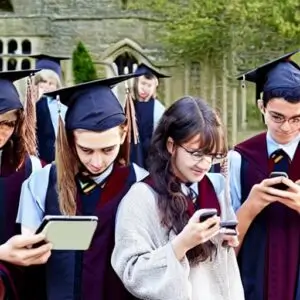Digital learning methods are essential in situations where daily commuting is impractical. Virtual education is a useful alternative for students with chronic illnesses or disabilities. Distance learning is also suitable for employed people who do not have time to attend traditional courses

Digital education can simply be defined as a method of education that uses digital tools and devices. These tools can simply be digitalized versions of ordinary educational ones; however, there are tools especially designed with innovative technologies for digital education, some of which do not always need an internet connection. There are also a plethora of online resources and tutorials. Here we have compiled a list of which tools to use and where to find digital tutorials.
The following are suggestions of tools for using in digital education:
Educational platforms (or “courseware”)
Acrobatiq:
This platform has more than a decade of scientific background and correlations with research institutes.it is a flexible course creating platform, particularly useful for engaging students and monitoring their progress with a well-structured data presentation.
Elucidat:
Elucidat claims to do the complicated parts for you. Easy to use and customize, and creates courses with high visual quality.
Blackboard Learn:
A versatile, popular, and mobile-friendly platform, Blackboard produces a classroom experience and has a great integration system Used in universities as much as in staff training.
Editing tools
Online writing tools, text editors and proofreaders; for example: Ilys, ReadWriteThink, MindMup and Hemingway, Grammarly, Paper Rater.
Tools for creating and editing video/audio material; for example: Hippo Video, Paint.NET, VideoCreek
Online educational games – For All Ages
Games are for everyone, children and adults alike, and can sometimes be better learning strategies than many other learning methods. There are simple games for learning geography, mathematics, languages, memory games, etc. However, some games have integrated learning with playing; you “learn as you play”, which is one of the best ways you can memorize teachings. Some of the best of such educational games include:
Micro training:
Micro-learning is currently a very effective method and has many benefits for organizations and schools. It has special benefits such as fast training, increased productivity, and easy tracking through constant updates. Micro-learning is known as short videos or short clips, but experience has shown that micro-learning can be a short game, test, and interactive video. Micro education is effective and practical when organizations need modules for specific purposes.
Personalize learning according to the needs of learners:
Personalized training is created by customizing the modules in libraries. This method is of great benefit to organizations because they do not need to provide all the modules to all learners. How do we know which modules to provide to the user? A Digital test can determine the extent to which the audience understands the concepts. Based on user performance, modules are provided to help them progress in cases where they are weak.
Learners will have access to a range of tools to improve their education. That way, schools no longer need to invest more. They only run and evaluate an online test once, build a library of modules for users, and no longer need to pay extra.

Mobile learning:
We all use mobile apps daily. Not surprisingly, cell phones are used for learning and teaching. With the increase in the number of companies that allows employees to be trained using their mobile phones. Mobile learning (MLearning) is growing and anyone can learn it anytime, anywhere.
Mobile phones are an ideal platform for learning through video and gamification, which also adds fun to learning and attracts attention. In fact, learning is personalized through smartphones. Mobile learning methods are always a substitute for traditional teaching methods so that you can, for example, access training courses through an app on your phone. This is a very useful way to learn digitally.
Smart Assistant (chatbots):
The popularity of Siri on the iPhone shows that people are now looking for smart voice assistants. Most organizations seek to develop intelligent voice systems for specific topics such as information security or data protection, etc. and use them as an intelligent search application. These smart apps help learners learn as they move and can be trained whenever the user wants. This is a key process for digital education.
Offline services
It is impossible to imagine an existence without the internet. Although the internet is an inseparable part of our lives, there are times that the internet connection is off and we just have to do things like the old times. Thankfully, we’d still have our PCs and smartphones to help us deal with it and continue our activities. Offline services are available for everything, as are for digital education.
Some offline services are designed for teachers, some for students, and some for both. Most of the offline tools use Cloud-saving/syncing services, so you do not need to worry about saving your work and transferring it to your online platforms. Some examples include:
KOLIBRI:
Khan Academy, which is a very good online education platform per se, has developed this new offline version after their previous KA-Lite.
Thing Link:
Thing Link provides an extensive and interactive platform with many capabilities to create teaching/learning material with especially excellent visuals.
Secretive:
Secretive allows teachers to create teaching material, assignments, examinations etc. for the students to work on and observe their progress.
In addition to traditional education, digital education is usually offered in universities. These courses allow students to receive instruction from home. Students are responsible for accessing the training themselves; Therefore, they must have access to a computer and an Internet connection. Digital education is done with different methods and goals and is divided into two different types based on the purpose of the event:
ü Online College Credit Courses: These classes can be used to earn a college degree. These courses are offered in a variety of subjects including biology, chemistry, history, social sciences, and more.
ü Professional Development Courses: These courses are for students who are looking to develop their skills. These skills include computer skills and professional certifications.
Virtual education is divided into different forms of simultaneous, asynchronous, combined, and correspondence. In the continuation of this article, we want to introduce you to different types of digital learning models.
Tutorial digital learning:
This is the simplest form of digital education. In this model, there is no communication between the student and the teacher.This model is also called self-learning.
In the past, digital learning was provided through digital media such as CDs and DVDs. Today, educational websites offer these courses in the form of online educational files that can be played or downloaded.
Face-to-face digital learning:
This model of digital learning is not online at all.In fact, in this method, the teacher and the students are physically present in the classroom; but the tools used for learning are multimedia and digital. These include computers, video players, and educational software such as PowerPoint.In this method, it is possible to use educational resources outside the classroom.
Asynchronous digital learning:
In this method, educational content is produced digitally and provided to the student.But the time of producing educational content is not equal to the time of presenting education.In fact, in this method, the professor produces the desired content and then provides it to the student through online access.Of course, this does not prevent the interaction between the professor and the students; And in this way, the teacher can interact with students via instant or email.
Simultaneous digital learning:
This is based on a live virtual meeting.In this method, the teacher and the student interact with each other at a specific time and through online means of communication.In this method, the teacher provides live training and the student asks his questions in an instant.In fact, it’s exactly like a face-to-face class; with the difference that communication is formed through cyberspace.
Combined digital learning:
This type of learning is a combination of two methods of face-to-face learning and asynchronous learning.In this method, in addition to learning in a classic and face-to-face manner, using online learning tools, students can use the classroom environment.In fact, blended learning methods try to use all available resources to improve the path of education and knowledge transfer by using online education methods, telecommunication facilities, and accesses and digital tools.There are various combination methods for teaching; but in general, they are all based on the same principles and to achieve the goal of improving the learning process.
The following are examples of resources for digital education and tutorials:
1. Universities
Today, most of the universities offer distance learning programs. You can study an online course in some of the highest ranking universities and earn a degree. University websites are also invaluable resources for tutorials and learning material and most are downloadable.
Harvard University (more than 600 free online courses, but NOT degrees), UMass (113 programs), California Institute of Arts (attractive Open Learning programs), and University of Florida Distance Learning are examples of universities with the best online programs in the United States. Worldwide examples include University College of London (6 online degrees, and thousands of online resources), the Chinese University of Hong Kong, Wageningen University and Research, and The International Telematics University UNINETTUNO.
Keep in mind to choose an accredited university, school, college, or education-provider. Check their respective educational authorities (e.g. departments of education), the schools’ backgrounds, and student reviews.
2. Websites
Apart from the obvious option of university websites, there are many other websites that provide learning material in interactive ways. Popular examples include: Coursera, Lifehack, edX, and TED-Ed.
3. Videos
Possibly the most popular method of online education, video tutorials can be found everywhere. YouTube is the largest and most general-purpose. Not every video is worth learning from, though. You need to first research that creates them and if the info are accurate at all. You can find trusted channels and website by taking time to search.

4. Personal lessons
Everyone who has some knowledge or skill of a subject or activity can start teaching online, find audience. Such courses usually get known through family and friends networks and, if they are of high quality, accuracy, and are professional, can find more exposure and join the above category.
Conclusion:
In today’s world, digital education is not only helpful and efficient but it also is becoming essential and in some cases, the only way to access quality education.
Digital education is also free in many cases and learning material and tutorials are very easy to find across the internet. Digital education means everyone can receive some form of education, and it is increasingly required in the world.



